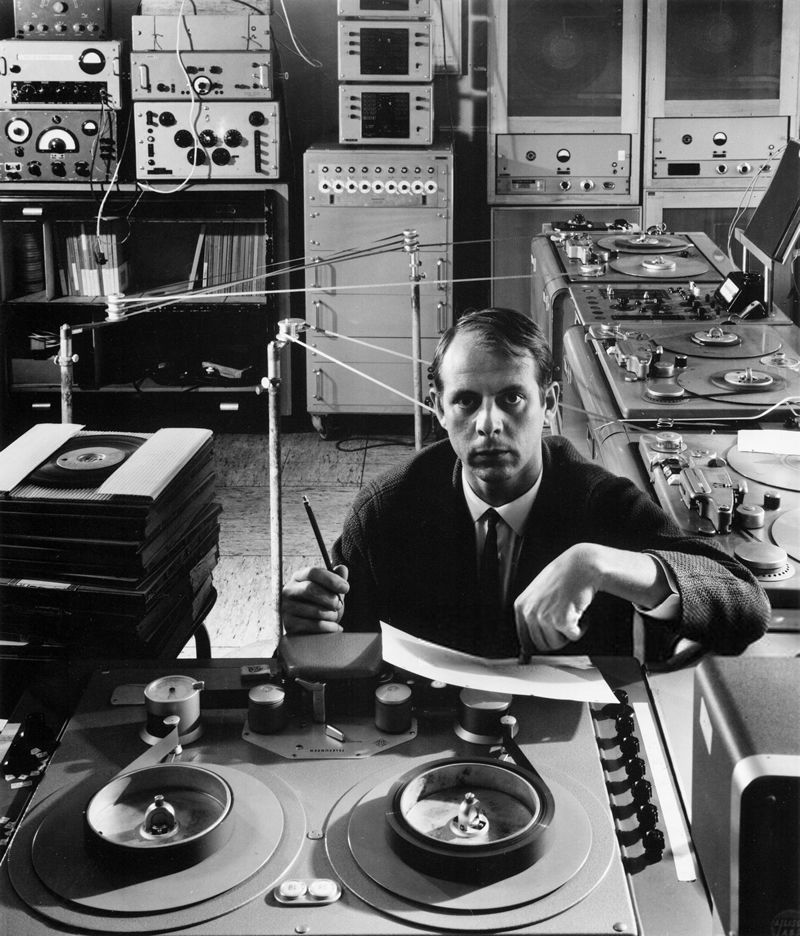
Instrumentation Works for Orchestra
Stockhausen Complete Edition on CD
Since 1991, a complete edition of all recordings in which Karlheinz Stockhausen has personally participated is being released on compact discs. Each CD in this series is identified by Stockhausen's signature followed by an encircled number. The numbers indicate the general historical order of the works.
Stockhausen realised the electronic music and participated in these recordings as conductor, performer, sound projectionist, and musical director. He personally mixed down the recordings, mastered them for CDs, wrote the texts and drew the covers.
- The compact discs may be obtained from the Stockhausen-Verlag: Kettenberg 15, 51515 Kuerten, Germany (www.stockhausenCDs.com).
Karlheinz Stockhausen
Instrumentation Works for Orchestra
HYMNEN / ANTHEMS
Instrumentation
WINDS
2 or 3 |
Flutes (at least 2 should also play piccolo, i.e. both when winds doubled) |
| Oboes | |
| Clarinets | |
| Bassoons | |
| Horns I | |
| Horns II | |
| Trumpets | |
| Trombones (2 with F-attachment) | |
| 1 (or 2) | Tuba(s). |
The woodwind and brass groups should have equal numbers of players.
When winds are tripled, all 3 play whenever there is only 1 note preceded by tutti in a part; only the 1st and 2nd play when there are 2 notes to be played simultaneously; all three play when there are signs in brackets with repeat signs.
Trumpets need straight mute , cup mute
, cup mute und wawa mute
und wawa mute ;
;
Trombones need straight mute , cup mute
, cup mute und plunger mute
und plunger mute  .
.
 = wawa / plunger closed;
= wawa / plunger closed; = closed
= closed  open;
open;
 = wawa / plunger open;
= wawa / plunger open; = open
= open  closed.
closed.
| STRINGS | 8 violins I |
| (if double or triple winds are used) |
8 violins II |
| 6 violas | |
| 6 violoncelli | |
| 6 double basses (all with 5 strings) |
Tuning of the orchestra: the original of the 4-track tape has a concert pitch of A = 435 Hz, because most of the national anthems collected in 1965 had approximately this tuning. All performances until 1984 were played tuning to this pitch. Increasingly higher tuning of the orchestras led to more and more resistance from the musicians to tune so low. Therefore, a transposed copy of the 4-track tape was made in the Studio for Electronic Music of the WDR Cologne, transposing from 435 Hz to 440 Hz. If such a copy is ordered, the orchestra may be tuned to A = 440 Hz. In this case however, one must be aware that since the tape runs somewhat faster, the durations are very slightly shorter than those notated in the score. At important places in the score, the timings of the transposed 4-track tape are written in ( ).
On the tape there is an A = 440 Hz for tuning prior to rehearsals. Preceding the dress rehearsal and concert, the musicians should tune in their rooms backstage and no longer play, once on stage. The double basses are tuned on stage before the audience enters.
Play-Back of the Tape
A 4-track tape and a 2-track tape of HYMNEN may be ordered from the Stockhausen-Verlag, 51515 Kürten, Germany.
For a performance of this work, the 4-track tape of the Second Region of HYMNEN is played back starting at
20'28.3" (3rd centre) until the end of the Second Region. At the end of this tape, the Russian Bridge of the orchestra
(see page 12 B) begins, and at the end of it, the
4-track tape of the Third Region is started. For
the version with orchestra, a sound from a short
wave radio has been added to the tape in front of
the beginning of the Second Region (20.28.3"):

HYMNEN with Orchestra
Commentary about the RUSSIAN BRIDGE (page 12B)
| 1 | Individual notes in the winds should not diminish in volume. |
| 2 | Trills in the strings: should be lengthened and the trills should make a ritardando. should be lengthened and the trills should make a ritardando. |
| 3 | Tutti accents and tutti indicated by the conductor should not
always be played by all of the winds, but rather only by the wind players
who are at that moment playing one of the transposed notes. According
to the duration indicated for these notes (1–2 seconds and poco accel. – rit.), also the winds may start and stop playing during a conducted fermata
or during a crescendo or decrescendo. indicated by the conductor should not
always be played by all of the winds, but rather only by the wind players
who are at that moment playing one of the transposed notes. According
to the duration indicated for these notes (1–2 seconds and poco accel. – rit.), also the winds may start and stop playing during a conducted fermata
or during a crescendo or decrescendo.Even if the conductor gives numerous accents in immediate succession (irregular or with accelerando or ritardando), pauses and transposition continue, as usual. |